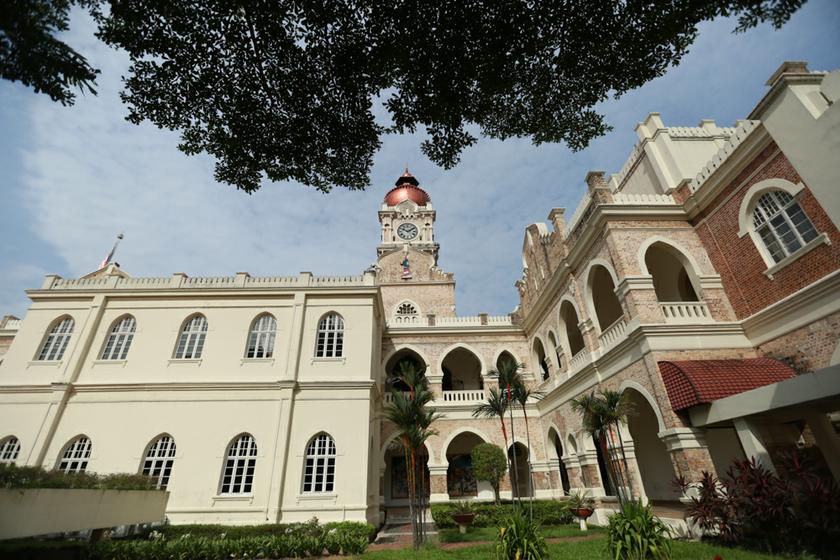KUALA LUMPUR, Dec 31 — For the past 15 years, Kunasegaran Velliah has been spending New Year’s Eve all by himself in a small room while hundreds of people are just below him cheering in the new year and enjoying the fireworks.
The unofficial caretaker of the 117-year-old clock at the iconic Sultan Abdul Samad Building here, Kunasegaran has been going at it solo on the same night every year since 1998.
The 58-year-old would literally stop the clock as dignitaries finish their speeches... after all, the clock can only chime midnight and ring in the new year after the speeches. Some years, the crowd at Dataran Merdeka welcomed the new year some 10 minutes late as speeches ran too long!
This is our country’s version of the Times Square countdown in New York on New Year’s Eve. This official celebration in Dataran Merdeka is broadcast “live” nationwide.
The Department of Survey and Mapping’s (Jupem) maintenance staff is the only one left who is trained to wind and maintain the more than a century-old Gillett and Johnston clock. Apart from his New Year’s Eve duties, he also winds the clock three times a week. Every week.
Kunasegaran told The Malay Mail Online that there used to be seven people tasked to care for what he claimed to be the biggest clock in Asia, but the last ones retired in 1998, leaving him the only one to wind the clock. An official from the department said nobody else is being trained because “nobody wants to learn, especially the younger staff.”

As such, he has not been able to go on leave for more than two days at a time for the past 15 years.
Three times a week, Kunasegaran climbs up the 40-metre clock tower, usually at about 7am, and winds the cable drum for the clock and bell 320 times and 28 times for the cable drum for the minute hand.
He explained that the 14 weights for the bell weighs 200 kilogrammes while the five bars weigh 50 kilogrammes for the minute. The bell itself weighs more than one tonne while the hammer weighs 50 kilogrammes.
Twice a week, he will also have to oil the hour hand downgear and minute hand counterweight.

“This clock can last for another 200 years, if you can maintain it, it can nicely run. But you must take care of it like family,” he said.
He said since the clock first chimed during Queen Victoria’s Jubilee Parade in 1897, it has never stopped working on its own, except for this one time.
“The only time it stopped on its own was during Merdeka Day, 1987. We went home after the countdown and then at 1am, it completely stopped.
“It took us six hours to fix, and we finally realised one screw had fallen off,” he said, stressing that the clock is a delicate machine. Even if one screw is out of place, or the weights are off-balance, the clock would stop working and it would take hours to wind it up.

Kunasegaran first started taking care of the clock when he was 19, and continues to do so today two daughters, one son, and four grandchildren later.
He said his daughters came to visit him at work when they were still in school as they were fascinated by the clock tower. His grandchildren, however, are too young.
“Last time, before the buildings and cars, the chimes of the bell could be heard up to seven, eight miles away.
“And during World War II, the clock tower was completely abandoned and in 1941, the Europeans used it as a siren to sound warnings when we got attacked. They did it manually from downstairs,” he said.
On August 31, 1957, the clock tower also witnessed the Union Jack flag being lowered and the Malayan flag hoisted for the first time when the clock struck 12.
Before independence, Dataran Merdeka symbolised British sovereignty as it was a cricket ground for the colonial administrators and the Royal Selangor Club which is behind it was Malaya’s most exclusive whites-only club at the time.
Today, Kunasegaran likens himself to a doctor to the clock, and that if something is wrong with it, he would be able to hear it.
“I must always listen to the sound of the clock, to see if it’s healthy, like today,” he paused and listened intently. “No stomach pain,” he chuckled.
Today, the building houses the administrative offices of the Tourism Ministry but prior to this, the Ministry of Information, Communications and Culture of Malaysia was housed in the building. And before that, the superior courts of the country were here before moving to Putrajaya in the early 2000s for the Federal Court and the Court of Appeals, and 2007 for the High Court.




















